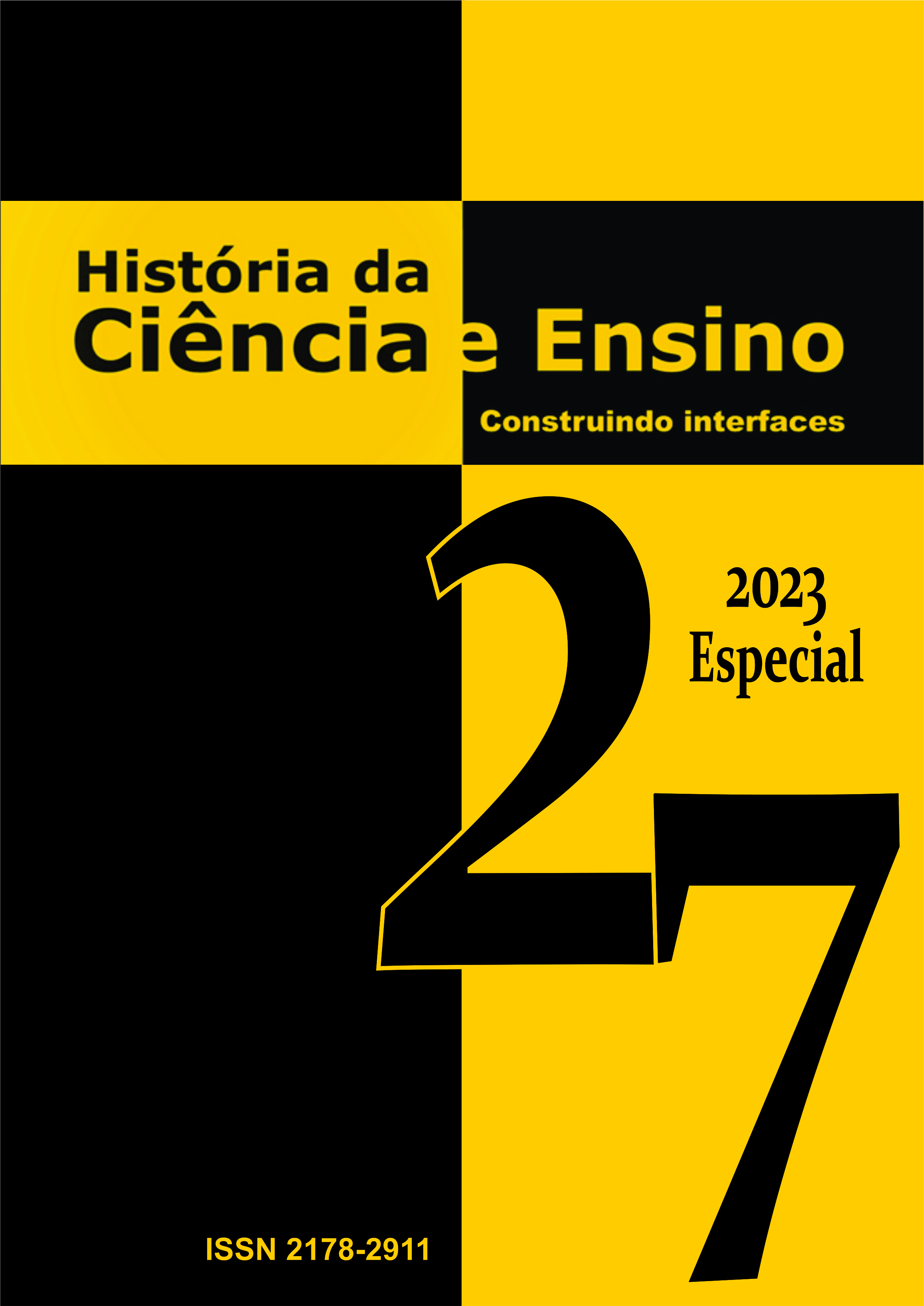Importance of Vaginal Cytology “Papanicolaou” in the Prevention of cervical cancer: Contributions to teaching of nursing
Vaginal cytology in the prevention of cervical cancer
DOI:
https://doi.org/10.23925/2178-2911.2023v27espp-79-87Keywords:
Cervical Cancer, Vaginal Cytology, Health Promotion, Women’s Health, Screening, NursingAbstract
The discovery of cervical cancer is one of the leading causes of cancer-related mortality in women worldwide. The vaginal cytology exam, known as Papanicolaou, is today a fundamental test in the early detection of pre-cancerous lesions of the cervix and other gynaecological infections. The implementation of screening programs using this technique has shown a reduction of between 70-80% in the incidence and mortality from cervical cancer. The Pap smear was developed in the early 20th century by a noted Greek-American physician, George Papanicolaou, who dedicated his life to research in the field of cytology, and he developed a technique to collect and examine cervical cells under a microscope. In 1945, they validated using a vaginal smear as a practical test to prevent cervical cancer. Its evolution to the current technique and the implementation of screening programs were crucial for promoting women’s health and quality of life. Nurses play a fundamental role in educating women about the importance of carrying out this examination regularly, in the adequate collection of samples and in providing psycho-emotional support during the procedure. This literature review aims to systematize knowledge about the evolution of vaginal cytology and its importance in promoting women’s sexual and reproductive health. This knowledge will give us a more comprehensive and consistent approach to this procedure in teaching nursing.
References
World Health Organization, Cervical Cancer - Key facts (2023).
. https://www.who.int/news-room/fact-sheets/detail/cervical-cancer (acesso em 1 de setembro de 2023).
International Agency for Research on Cancer. "Global Cancer Observatory." Disponível em: http://www-dep.iarc.fr/WHOdb/WHOdb.htm (Acesso em 3 de novembro de 2023).
Teixeira, C., Pereira, A. M., Anes, E., Rodrigues, C., & Castanheira, M. J. "Time-Trends in Cervical Cancer Mortality in Portugal." Acta Medica Portuguesa 32, no. 6 (junho de 2019): 427-433. Disponível em: https://www.actamedicaportuguesa.com/revista/index.php/amp/article/view/8921 (Acesso em 3 de novembro de 2023).
Cristina Nogueira-Silva, Cancro do colo do útero é “segunda causa de morte em mulheres com menos de 44 anos”. Jornal a Verdade (20229. https://averdade.com/cancro-do-colo-do-utero-e-segunda-causa-de-morte-em-mulheres-com-menos-de-44-anos/
Instituto Nacional de Estatística - INE, Dados de mortalidade referentes ao perido de 2021. https://www.ine.pt/xportal/xmain?xpid=INE&xpgid=ine_indicadores&indOcorrCod=0008206&xlang=pt&contexto=bd&selTab=tab2 (acesso em 29 de novembro de 2023).
Administração Regional de Saúde do Norte - ARS, Norte. "Rastreio_Cancro_Colo_Utero_FAQ." 2022. Disponível em: https://www.arsnorte.min-saude.pt/wp-content/uploads/sites/3/2023/01/Rastreio_Cancro_Colo_Utero_FAQ.pdf. (acesso em 27 de agosto 2023).
Sociedade Portuguesa de Ginecologia e Obstetricia, 2022
Jallah, J., Anjankar, A., Nankong, F. A. "Public Health Approach in the Elimination and Control of Cervical Cancer: A Review." Cureus 15, no. 9 (September 01, 2023): e44543. doi:10.7759/cureus.44543.
Peirson, L., Fitzpatrick-Lewis, D., Ciliska, D., Warren, R. "Screening for Cervical Cancer: A Systematic Review and Meta-Analysis." Systematic Reviews 2 (2013): 35.
Quem foi George Papanicolaou, criador do exame considerado uma das armas mais poderosas contra o câncer. BBC News Brasil, 2019. https://www.bbc.com/portuguese/geral-48235865 (acesso em 29 de agosto de 2023).
Lopez, A. Georgios Papanicolau, o descobridor do teste de câncer de útero. El Pais, 2019. https://brasil.elpais.com/brasil/2019/05/13/ciencia/1557731106_609584.html
Koss LG: The attack on the annual “Pap smear”. Acta Cytologica 1980; 24:181-183.
Schneider, Volker. "Criticism of the Pap Smear as a Diagnostic Tool in Cervical Cancer Screening." Acta Cytologica 61, no. 4-5 (2017): 338–344. https://doi.org/10.1159/000477653.
Casper, Mónica J., & Clarke, Adele E. "Making the Pap Smear into the 'Right Tool' for the Job: Cervical Cancer Screening in the USA, Circa 1940-95." Social Studies of Science 28, no. 2 (abril de 1998): 255-290.
Gultekin, M., Ramirez, P. T., Broutet, N., Hutubessy, R. "World Health Organization Call for Action to Eliminate Cervical Cancer Globally." International Journal of Gynecological Cancer 30 (2020): 426-427. doi:10.1136/ijgc-2020-001285.
Jallah, J., Anjankar, A., Nankong, F. A. "Public Health Approach in the Elimination and Control of Cervical Cancer: A Review." Cureus 15, no. 9 (September 01, 2023): e44543. doi:10.7759/cureus.44543.
Direção Geral de Saúde. Comissão Técnica de Vacinação. Programa Nacional de Vacinação (PNV). Introdução da vacina contra infecções por Vírus do Papiloma Humano. Texto de apoio à Circular Normativa n.º 22 /DSCS/DPCD de 17 de Outubro de 2008. http://www.spdc.pt/files/legix/11245_3.pdf. (acesso29 agosto 23).
Diário da República n.º 183/2017, Série II de 2017-09-21, páginas 20788 – 20789.
Sociedade Portuguesa de Oncologia. Rastreios oncológicos. https://www.sns24.gov.pt/tema/doencas-oncologicas/rastreios-oncologicos/(acesso em 27 de agosto 2023).
Fontham, ETH, Wolf, AMD, Church, TR, et al. Cervical Cancer Screening for Individuals at Average Risk: 2020 Guideline Update from the American Cancer Society. CA Cancer Journal of Clinical. 2020. https://doi.org/10.3322/caac.21628.
Perkins, Rebecca B et al. “Cervical Cancer Screening: A Review.” JAMA vol. 330,6 (2023): 547-558. doi:10.1001/jama.2023.13174
WHO. Global strategy to accelerate the elimination of cervical cancer as a public health problem (2020). https://www.who.int/publications/i/item/9789240014107(acesso em 27 de agosto 2023).
Rocha, Raquel; Grupo de Estudo da Vacina do HPV; Verdasca, Nuno. "First Studies on the Identification of Human Papillomavirus (HPV) Genotypes in a Vaccinated Portuguese Female Population with Active Sexual Activity." Boletim Epidemiológico Observações Número 1 (2017): 4-9. Instituto Nacional de Saúde Doutor Ricardo Jorge, IP. https://repositorio.insa.pt/bitstream/10400.18/4709/1/Boletim_Epidemiologico_Observacoes_N18_2017_artigo1.pdf (acesso em 28 de agosto 2023).
Monk, B. J., & Tewari, K. S. "The Spectrum and Clinical Sequelae of Human Papillomavirus Infection." Gynecologic Oncology 107, no. 2 Suppl (2007): S6-S13.
Kjaer, S. K., Tran, T. N., Sparen, P., et al. "The Burden of Genital Warts: A Study of Nearly 70,000 Women from the General Female Population in the 4 Nordic Countries." Journal of Infectious Diseases 196, no. 10 (2007): 1447-1454.
Sawaya, George F et al. “Cervical Cancer Screening: More Choices in 2019.” JAMA vol. 321,20 (2019): 2018-2019. doi:10.1001/jama.2019.4595


